C#版本的国外朋友已经封装了,大家可以去看看:https://github.com/ccollie/snowflake-net
强大的网友出来个简化版本:http://blog.csdn.net/***/article/details/*** (地址我就不贴了,对前辈需要最起码的尊敬)
一开始我用的是这个简化版本,后来发现有重复项。。。(demo:https://github.com/dunitian/TempCode/tree/master/2016-11-16/Twitter_Snowflake)
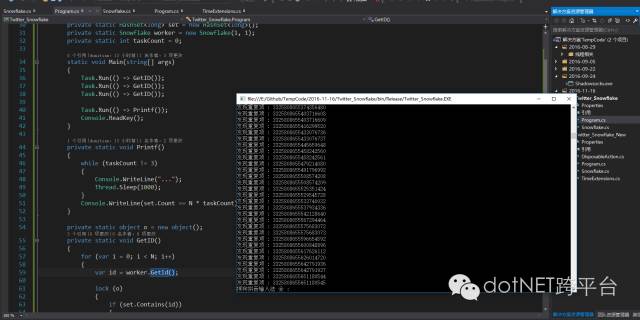
全局ID的激烈讨论:https://q.cnblogs.com/q/53552/
之后在外国大牛的基础上重写修改了部分内容(https://github.com/ccollie/snowflake-net),添加了一些注解等【支持Core】。现在是可以去Nuget直接下载使用的:Snowflake.Net
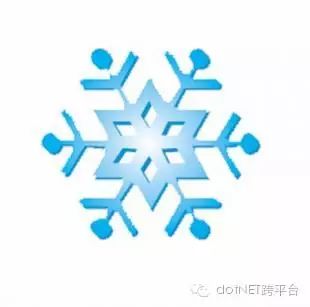
源码地址:https://github.com/dunitian/snowflake-net
测试用例:
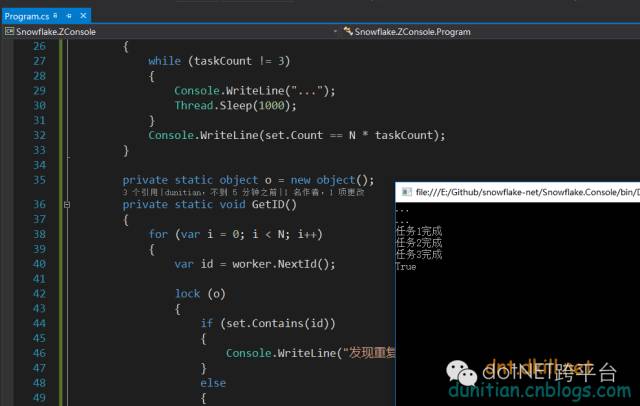
测试代码:
using System; using System.Collections.Generic; using System.Threading; using System.Threading.Tasks; using Snowflake.Net; namespace Snowflake.ZConsole { class Program { private static int N = 2000000; private static HashSet< long > set = new HashSet< long >(); private static IdWorker worker = new IdWorker(1, 1); private static int taskCount = 0; static void Main( string [] args) { Task.Run(() => GetID()); Task.Run(() => GetID()); Task.Run(() => GetID()); Task.Run(() => Printf()); Console.ReadKey(); } private static void Printf() { while (taskCount != 3) { Console.WriteLine( "..." ); Thread.Sleep(1000); } Console.WriteLine( set .Count == N * taskCount); } private static object o = new object (); private static void GetID() { for ( var i = 0; i < N; i++) { var id = worker.NextId(); lock (o) { if ( set .Contains(id)) { Console.WriteLine( "发现重复项 : {0}" , id); } else { set .Add(id); } } } Console.WriteLine($ "任务{++taskCount}完成" ); } } } |
可能有些人只关心以后怎么用?==》
IdWorker worker = new IdWorker(1, 1); //大并发的情况下,减少new的次数可以有效避免重复的可能
var id = worker.NextId();
有可能上面的减少new有些同志不太懂,(⊙o⊙)…,举个例子:
测试代码不变的情况下,改这么一句:
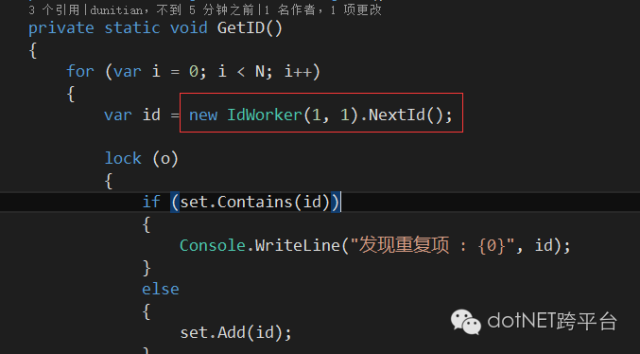
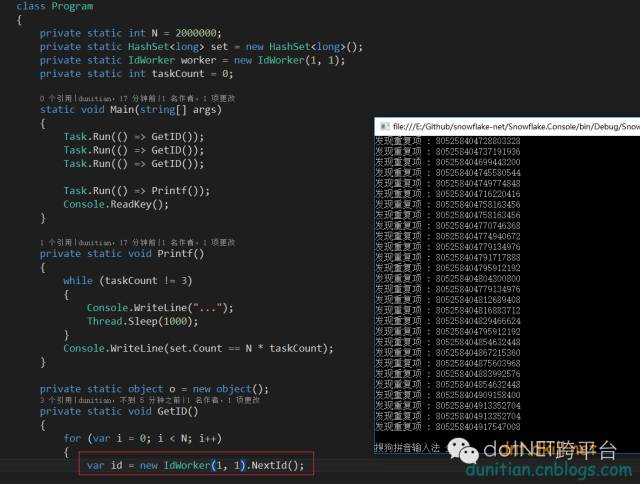
完整调用demo:(https://github.com/dunitian/snowflake-net/tree/master/Demo)

core:(https://github.com/dunitian/snowflake-net/tree/master/Demo.Core)
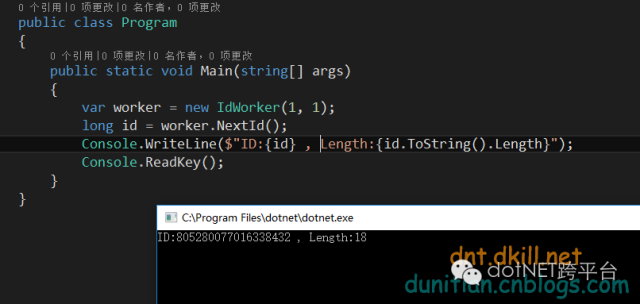
原文地址:http://www.cnblogs.com/dunitian/p/6130543.html
.NET社区新闻,深度好文,微信中搜索dotNET跨平台或扫描二维码关注


)









G460AL-ITH Linux笔记本电脑CPU测试评测-ZOL中关村在线...)

深入分析ConcurrentHashMap)





